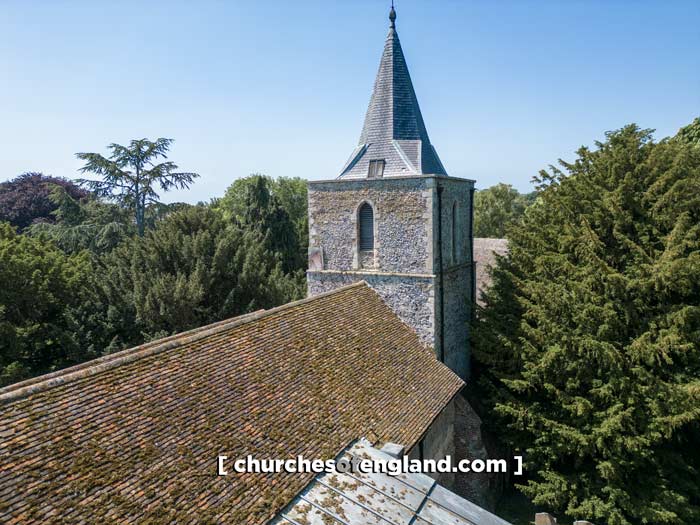St. Vincents Church in Littlebourne, Kent
Littlebourne Parish Church honours Saint Vincent of Saragossa, Deacon and Martyr, Patron of Vine Dressers with the only St. Vincent church in Canterbury is one of six in England.
According to the Domesday Book of 1086, the monks of St. Augustine’s who grew vines near Littlebourne built a wooden church. The Barn framework shows large timbers that may have come from the first Church.
The variety of architectural styles suggests an extended construction period. The South Nave arcading is likely 12th-century, whereas the Chancel’s height is 13th-century. The Chancel’s lancets and the Aisles’ elaborate double lights show the passage of time.
St. Vincents Church in Littlebourne has a central Nave with North and South aisles, a Chancel to the East, and a Bell Tower to the West.
The Nave and aisles were built around 1200. The North Aisle, originally the same length as the South, collapsed towards the end of the 18th century, presumably in a snowstorm that damaged the spire.
One of the original North arcade arches encloses a window in the outside wall. The timber arcade was replaced, two semi-circular arches were added, and the roof was flat.
After the North Aisle collapse, renovations revealed the Wall Painting on the North Nave wall facing the South West door. Charles Igglesden sketched and published it in 1900. He claims it depicts a St. Christopher scene.
The chapel to St. Christopher in one of the aisles was where travellers stopped to pray for safe passage over the Stour at Grove (8 kilometres north of here). William Davison offered St. Christopher 1 kg of wax for tapers in 1514.
At St. Vincents Church in Littlebourne, the Chancel is higher than the Nave, suggesting a 13th-century rebuild. Remaining lancet windows support this date.
A restricted sacrament aumbry is on the Sanctuary’s North Wall above the window cill moulding. Early 15th-century incumbent Thomas Browne recognised this.
A tiny entrance on the south side of the Chancel Arch may have led to a Rood Loft with the Light of the Holy Cross. 1482–1533 wills mention this.
The South Aisle has another piscina right of the altar. 1499, 1514, and 1516 wills reference the Lady Chapel in this area of the Aisle. Returning crusaders and pilgrims cut tiny crosses into some of the pillars.
Nathaniel Westlake’s Lavers, Barraud & Westlake business created St. Vincent’s beautiful stained glass windows. They were built from 1864 to 1895. It’s rare to see a glazing scheme developed and executed by the same business that uses a variety of historically inspired designs so well.
The McGachen Memorial window in the South Aisle is the last while the East end triple lancet is the first.
Photos of St. Vincents Church in Littlebourne

Unfortunately this is the only aerial photo we have on file for St. Vincent’s church in Littlebourne.